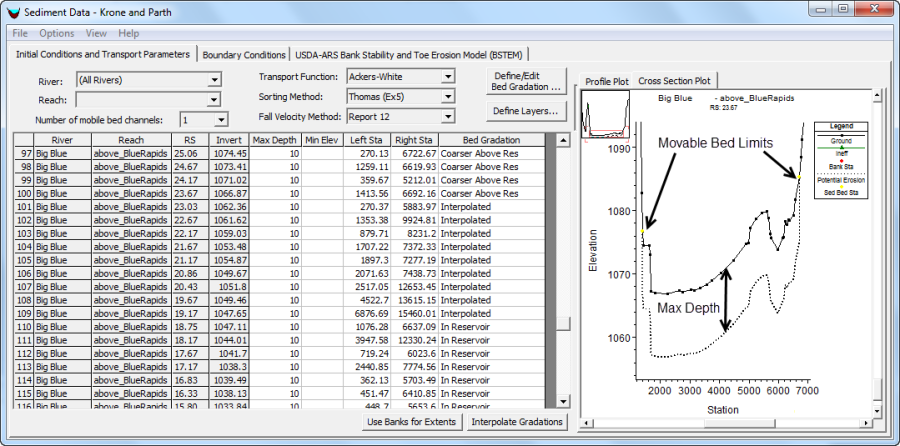Download PDF
Download page Entering and Editing Sediment Data.
Entering and Editing Sediment Data
Hydraulic models in HEC-RAS require three files: a flow file (steady or unsteady), a geometry file, and a plan file to tie them together. Sediment analyses (steady or unsteady) require a fourth file: a sediment data file (see Flow Data and Event Conditions). Specify sediment data after the geometry file is complete. Some mandatory sediment parameters are specified by cross section. If the geometry changes (e.g. cross sections change, new cross sections are added, cross sections are interpolated a new resolutions or in new locations) sediment data will need updates before it can run.
Sediment results are very sensitive to hydraulic results (e.g. roughness parameters and ineffective flow areas). An HEC-RAS sediment model will not be robust or reliable if it is not built on a well-constructed hydraulic geometry (USACE, 1993, Thomas and Cheng, 2008). Before adding sediment data, test the hydraulic model over the expected range of flows using the HEC-RAS Steady Flow Analysis option (or the Unsteady Flow Analysis option if the sediment model will be unsteady), calibrating the n-values for various flows, identifying ineffective flow areas, and evaluating cross section spacing. Identify hydraulics model problems before adding the bed change complexity. Only add sediment data after crafting a careful, robust, hydraulic model.
To enter sediment data select Sediment Data from the Edit menu or press the sediment data icon. ![]()
The sediment data editor will appear as depicted in the figure below. The sediment data editor has three tabs: Initial Conditions and Transport Parameters, Sediment Boundary Conditions, and the USDA-ARS Bank Stability and Toe Erosion Model (BSTEM). The first two tabs are mandatory. The third (BSTEM) is only for bank process computations and is not required for a sediment transport model.
